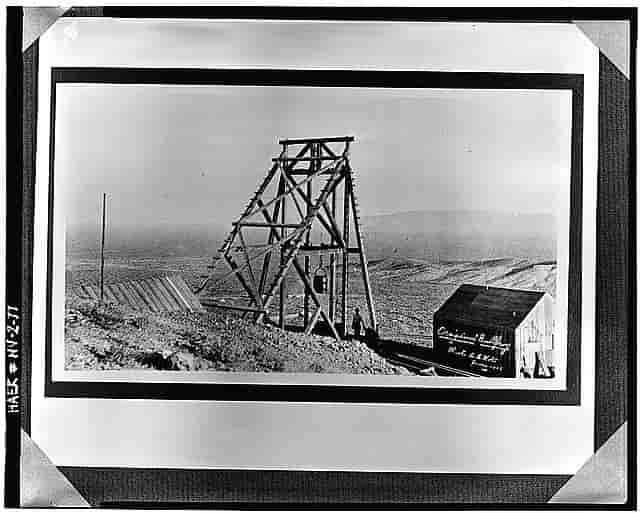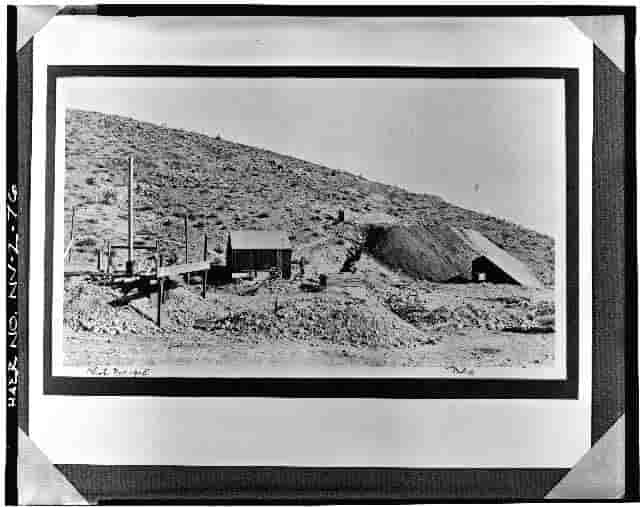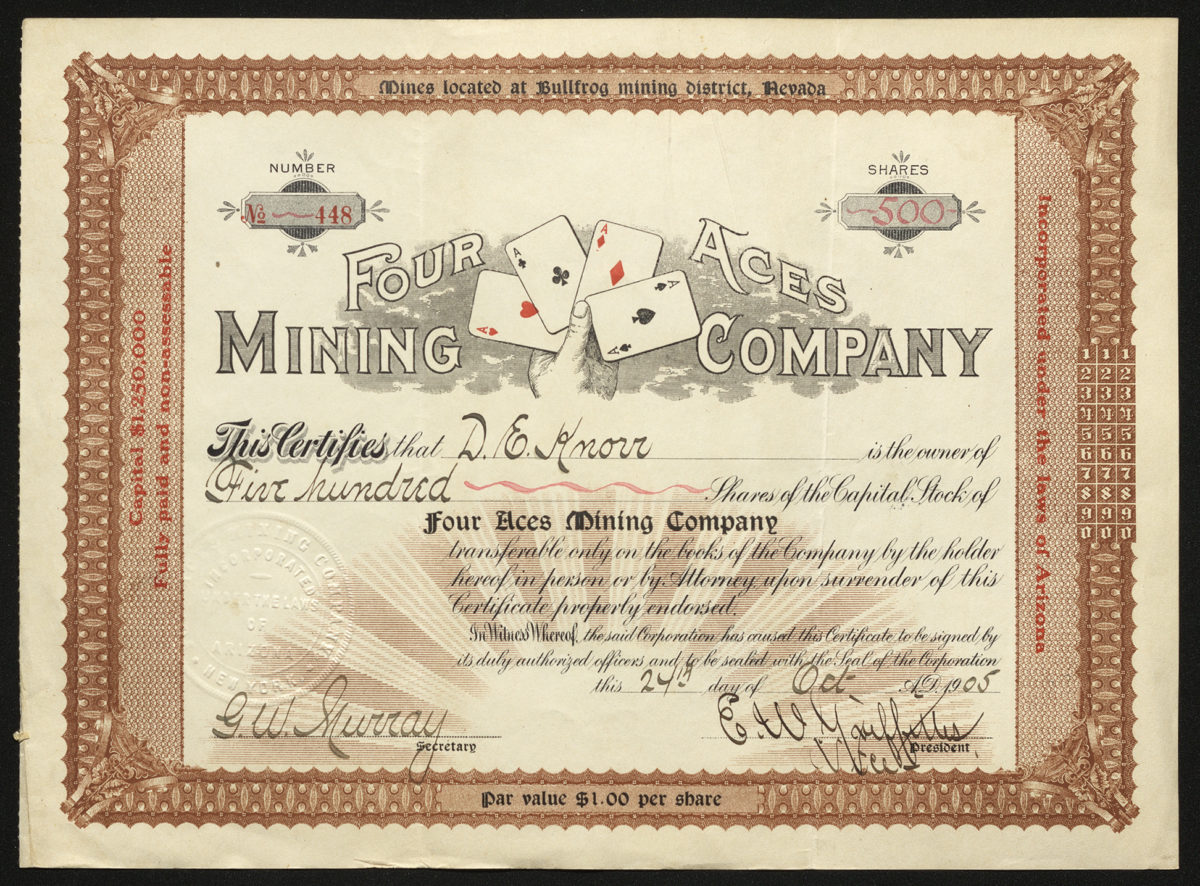
False Hopes at the Four Aces
Hopes were high when initial assays indicated that the ore of the Bullfrog Mining District was high grade. The area soon became wrapped up in a flurry of speculation that led to eventual disappointment as the mines, such as the Four Aces, quickly became worthless.
Header Image: The hoisting works of the original Bullfrog Mine; courtesy Library of Congress [1].
“The mine never produced much gold...... other than these stock certificates that are treasured by collectors.”

The original Bullfrog Mine near Rhyolite, Nevada; courtesy Library of Congress
The Four Aces Mining Company has a beautiful and unique stock design. The company’s president was Stillman F. Kneeland, a lawyer and author who fought under General Grant in the American Civil War. The mine was located in the Bullfrog Mining District in southwestern Nevada, an area that included the mining towns of Beatty, Rhyolite, and Bullfrog.
The strike was discovered by prospectors Ed Cross and Frank “Shorty” Harris in 1904, and the mining district’s name supposedly came from the mottled green color of the ore that looked like a bullfrog. The discovery came close on the heels of the nearby Tonopah and Goldfield mining booms, so hopeful miners immediately flocked to the Bullfrog Mining District to try to stake a claim early and make their fortune.
Initial assays indicated the gold ore was of a high grade and expectations were high for the future of the mining district. This stock certificate was one of thousands of shares for the Four Aces Mining Company bought up and promoted by the New York City mining stock broker firm of O.F. Jonasson & Co. In 1906, the firm touted their successes in the Salt Lake Tribune:
The firm of O.F. Jonasson & Co. of New York and Pittsburg is the largest firm of mining stock brokers in the entire United States. Their record of stock offering in the past has been one series of successes, the latest instance being the placing of a majority of their 22,000 clients’ funds in the stock of the Four Aces Mining Company of Bullfrog, Nev., at 12 cents per share. TODAY THE STOCK OF THE FOUR ACES MINING COMPANY IS SELLING ON THE NEW YORK CURB AT WELL ABOVE 60 CENTS PER SHARE.
The rich ore surveyed at the site was mainly on the surface, and operations soon ran into low-grade ore. Mining expert Frederick L. Ransome had surveyed the site in 1905 and anticipated this, writing that while some rich ore had been found, “the mass as a whole is of very low grade.” Unfortunately for expectant investors, these findings weren’t published until 1907. The Bullfrog District quickly entered into decline and was mostly dead by the early 1910s. During its prime years, it had produced $1,687,792 worth of gold ore. As one collectible stock seller put it, the Four Aces Mine never produced much of value “other than these stock certificates that are treasured by collectors.”
 University of Nevada, Reno
University of Nevada, Reno
